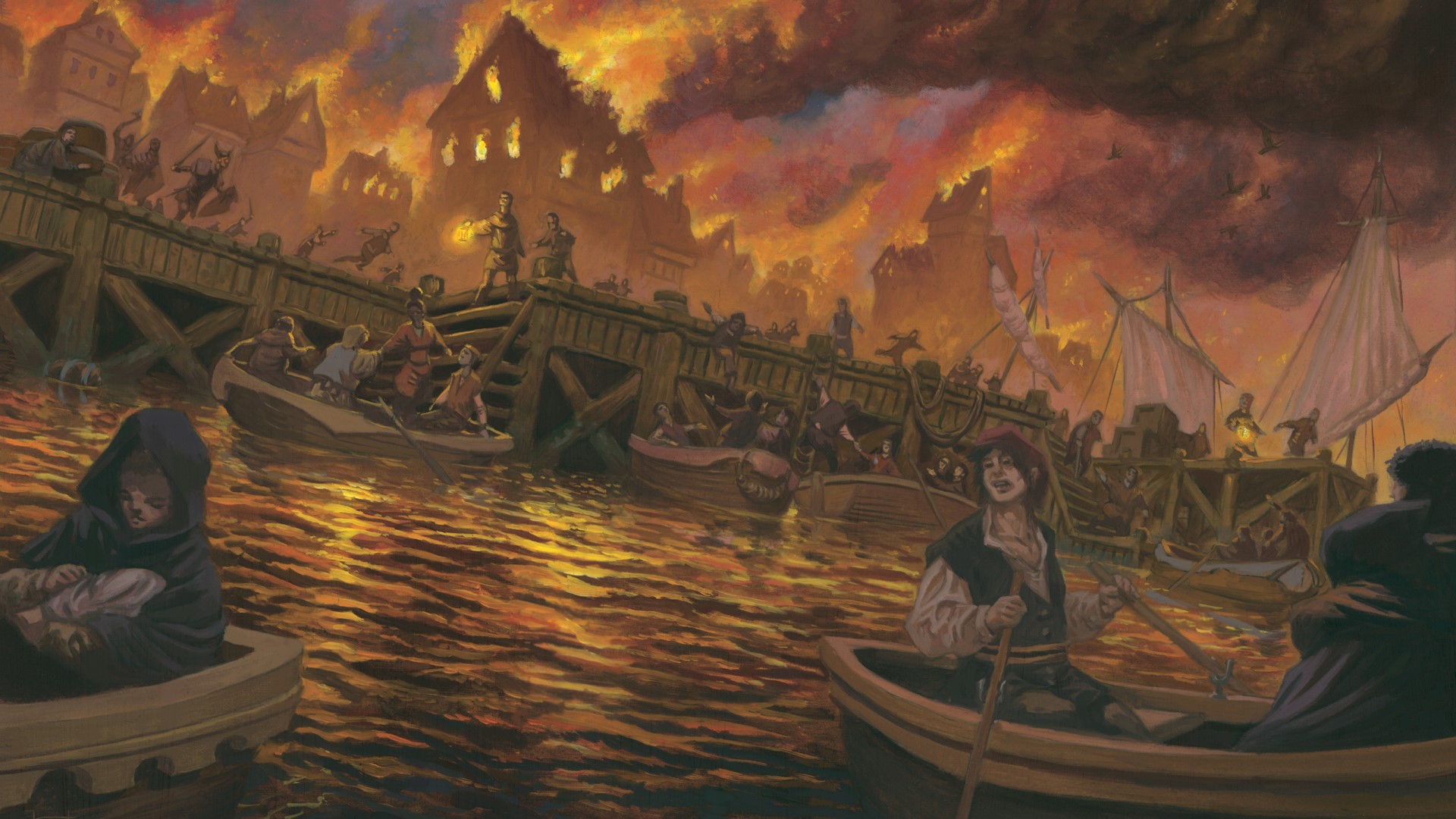Our Verdict
While its core gameplay is engaging and the campaign has some dynamic ideas, Warriors of Krynn is overwhelming in some smaller areas and underwhelming in others. All this adds up to a game with a solid foundation but nothing that really makes it shine beyond the average.
D&D announced its 2022 Dragonlance products as a tabletop double-whammy. Shadow of the Dragon Queen wasn’t just your typical, nostalgia-fuelled war campaign book; it also had a specially-designed tie-in board game to handle mass combat (something the tabletop RPG is famously not-great-at). Enter Dragonlance: Warriors of Krynn.
Wizards of the Coast were kind enough to send the deluxe edition of the game to Wargamer. I already shared a Shadow of the Dragon Queen review, and it proved a solid and enjoyable entry in 5E’s library. I had high hopes that Warriors of Krynn would clear the same hurdle – but it left me somewhat disappointed.
What is Dragonlance: Warriors of Krynn
Dragonlance: Warriors of Krynn is a cooperative, campaign-based board game designed as a tie-in to the D&D campaign book Dragonlance: Shadow of the Dragon Queen. Players of the tabletop RPG are encouraged to use Warriors of Krynn to stage large-scale battles during their adventure, with the board game’s campaign story loosely following the events of the RPG book.
Warriors of Krynn can be played as a standalone board game, however, and this is how I approached it for this review. Bear this in mind, as I spend less time considering the game as a TTRPG tool in the following sections.
The game’s design comes from Rob Daviau, who’s perhaps best known for his work on legacy board games like Pandemic Legacy and Betrayal at House on the Hill legacy. And while there are legacy elements to Warriors of Krynn, the game is a mish-mash of genres and mechanics. This is one part wargame, one part roleplaying game, and one part legacy game.
What’s in Dragonlance: Warriors of Krynn
Warriors of Krynn includes 12 board game scenarios across three difficulty levels. Scenarios divide your team between completing objectives and influencing mass battles, and both of these take place on a variety of unique battle and adventure tiles that can be combined in various ways. Your playable heroes are represented by DnD miniatures, while wooden tokens and plastic markers stand in for various DnD monsters, as well as ally and enemy units.
In-game actions are largely dictated by cards and dice rolls. Each of the DnD classes gets ability cards and class cards that explain what they can do with their turns, event cards throw new challenges into the mix every round, and unit activity is decided by various unit decks. There are also several commanders leading the scenario’s battles (some of which you might recognise from Shadow of the Dragon Queen) with their own unique abilities to influence the board.
Is Dragonlance: Warriors of Krynn good or bad?
Visually, these components come together to create a game that’s lovely to look at. However, they all add up to nearly 600 tokens, cards, and tiles. Many of the scenarios took well over 25 minutes just to set up. In my recent Gloomhaven review, I criticised the behemoth board game for its long and fiddly setup times – and I’ve managed to start Gloomhaven up in less time than a typical game of Dragonlance: Warriors of Krynn.
Gloomhaven gets away with its impractical setup because it’s one of the best board games out there; the same can’t be said for Warriors of Krynn.
At its core, the game does a lot of things well. The main mechanic, one which sees you playing a supportive role to give allied armies an edge in their next battle while also exploring the map to complete objectives, is engaging enough. Some later scenarios add creative and dynamic spins to the gameplay loop which are intriguing and impressive.
The problems are in the details. Warriors of Krynn relies on a complex web of fiddly smaller rules to maintain its balance. If these weren’t in the game (or were forgotten by the players while still getting to grips with the game, as happened to me on occasion), scenarios would become overwhelmingly easy.
The campaign isn’t overly difficult as it is; it feels like narrative was prioritised over challenge up until the game’s later scenarios. This design choice makes sense for a tie-in TTRPG product, of course, but it seems to conflict with the part of Warriors of Krynn that still wants to be a strategic war game.
Despite the amount of small-yet-important rules in Warriors of Krynn, the board game left me regularly wishing for more clarity. A lot of key terms – what a crewed War Machine is, or exactly what ‘your hand’ means, for example – are left to assumption and player judgement.
Action economy in Warriors of Krynn also feels inefficient. Players are all working towards the same objectives, some of which mean one player gets to hit the switch and complete the quest while the rest wander the map, farming equipment and trying to find ways to use the four actions per turn they’re given.
Additionally, Warriors of Krynn doesn’t really give fans of campaign or legacy board games enough to look forward to. It relies on its accompanying RPG book to tell the real story of Dragonlance, offering disconnected intros and scraps of isolated lore instead. There’s no compelling plot tieing events together.
The legacy elements are similarly underwhelming. The two increased difficulty levels give you new packs of cards to open, and these include new class cards with extra abilities, new commanders, and additional cards for the unit battle decks. The additional class abilities held some interest, but the legacy experience felt tacked on and lacked the wow factor other games in the genre build into their boxes.





